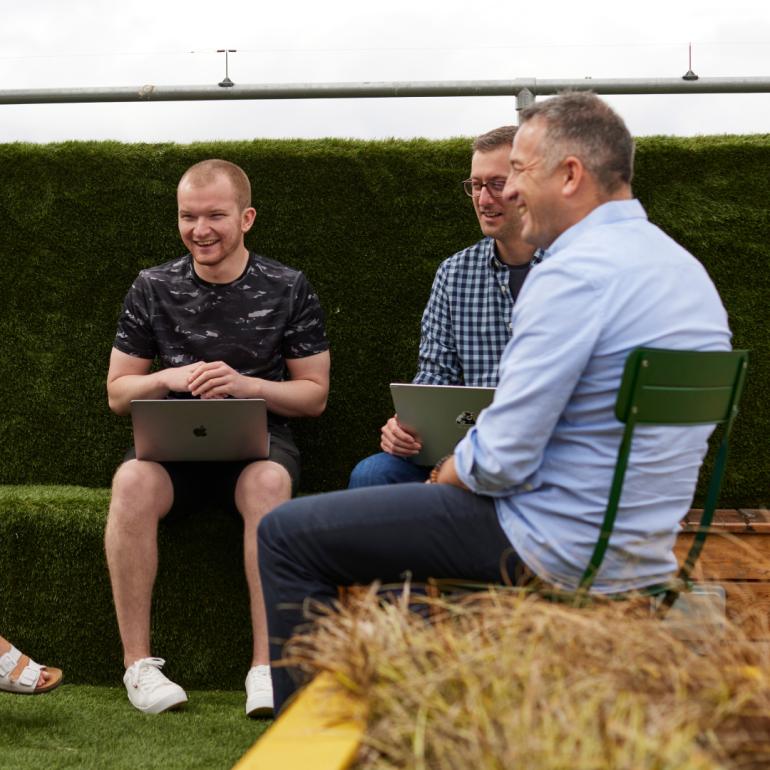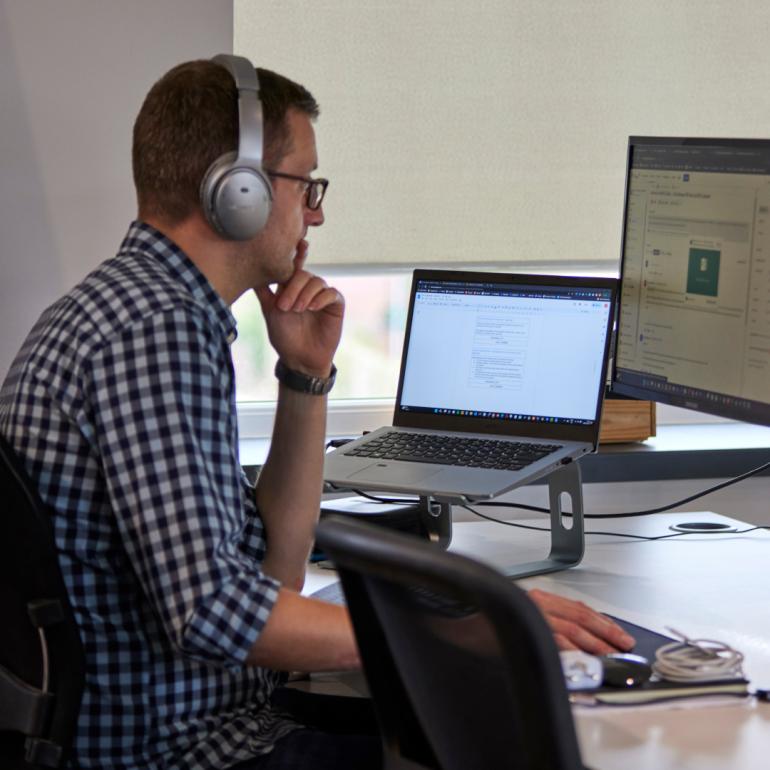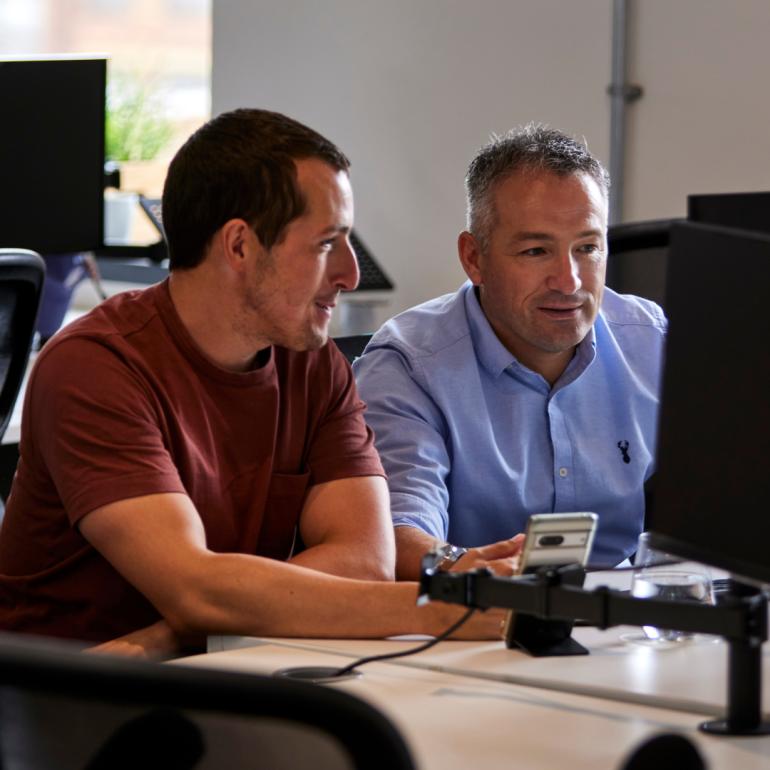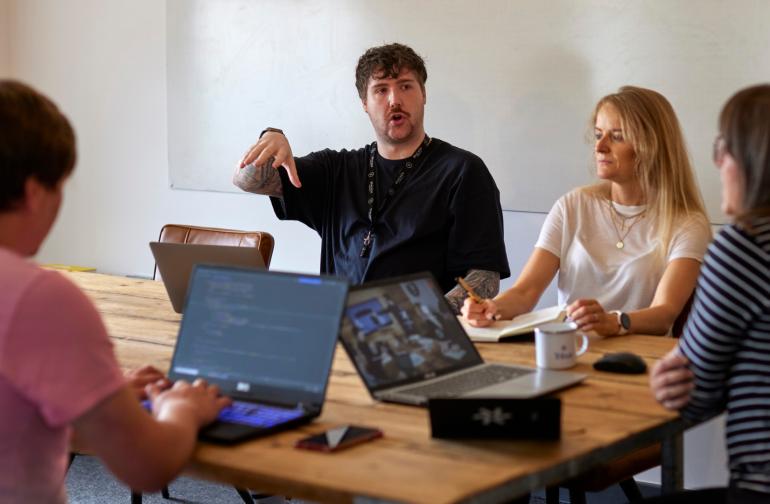Creating any type of website involves a series of well-defined steps that ensure the final product is effective, user-friendly, and aligned with the client's goals. At Tribus Digital, we follow a structured yet flexible process from the initial concept to the final launch. Ensuring timely delivery, meeting client expectations, and maintaining high quality throughout. Here’s a look at our development process, along with an insight into the tools and technologies we use and why they are crucial for delivering high-quality websites.
Workshop and Scoping With The client

Our first step in the web development process is to hold scoping sessions with partners. This session is crucial for understanding the project requirements and setting the foundation for the entire development process. During this session, we aim to:
Understand the website's users: Identify who will be using the website and what their needs are.
Define the website’s goals: Clarify what the website aims to achieve, whether that's increasing sales, providing information etc.
Selecting the Right CMS

Tribus primarily build solid technical foundations using PHP which is flexible, compatible, robust and very widely used. (Our team attended the PHP conference which you can read about here!)Our technical team can adapt to projects of varying sizes, ranging from brochure sites through to custom builds and integrations.
A major contributor to building a solid and scalable technical foundation is selecting a suitable content management system (CMS). Every project has different requirements, and we believe a CMS should be chosen based on these needs. We have years of experience developing websites using leading CMS platforms, including WordPress, Drupal, and Statamic.
Following the scoping phase, one of our initial objectives is to propose a CMS platform that:
Is easy to manage: Ensures you can understand and manage the website independently.
Offers granular control: Provides detailed control over what users can manage.
Supports functionalities: Can support a booking system, payments, and a members area.
Facilitates engagement: Promotes member engagement through discussion, exclusive content, events, and donation facilities.
Integrates with CRM: Communicates data to and from the CRM. (Customer data CRM integrations)
Creating a Sitemap and Information Architecture

Based on the insights from the workshop, we proceed to create a sitemap and information architecture. This step is essential for structuring the website and ensuring a smooth user experience. Here’s how we do it:
Mapping out website pages: Organising the website’s structure, including all the main pages and subpages.
Defining content placements: Establishing how information is categorised and prioritised across the site.
Developing Clickable Prototype Wireframes

With the sitemap in place, we create clickable prototype wireframes. This stage is crucial for visualising the user journey and refining the website's layout. It focuses on:
Understanding content flow: Determining the order and placement of content on each page.
Targeting key users: Ensuring that the layout and navigation meet the needs of the primary users identified in the workshop.
Designing the Website

Once the wireframes are approved, we move on to the design phase. This stage is where the visual elements of the website come to life. It involves:
Creating a clickable design prototype: Developing a detailed, interactive version of the website design.
Ensuring consistency: Maintaining visual and functional consistency across all pages.
Development Standards

Interfacing the CMS will be the website ‘front-end’ that your users interact with. The front end is made up of page layouts which are in-turn ‘built up’ using modules in the CMS. Collectively they will present the user with a responsive, accessible (WCAG 2.2 standard) and dynamic experience.
During development we also continually consider the performance metrics of the website - routinely testing pages to ensure they load quickly for the end user on a range of devices. Additionally, it will be robustly tested to ensure that it is optimum across the latest web browser software and the most popular browsing devices.
From a security point of view, measures such as a firewall, malware scanning, live traffic monitoring and two-factor authentication will be implemented to protect your users.
Developing the Website

The final step is the development phase, where our technical team brings the project to life. This phase ensures the website is not only functional but also reliable. It involves:
Building the website: Translates the design into a fully functional website using the latest technologies and best practices, including the creation of websites in Drupal, Statamic, and Wordpress.
Conducting testing: Performs thorough testing to ensure the website works seamlessly across all devices and browsers.
Docusign integration: Managing the digital signing of contracts to streamline workflows.
Large legacy import systems: Pulling initial datasets from Excel sheets/CSVs into new digital platforms.
Custom SSO integration: Ensuring all customer products use the same user login across a business.
Office 365 login integration: Simplifying access on standalone websites.
PowerBI integrations: Providing up-to-date data entry information, both via direct database access and regular backups.
GA4 implementation: Setting up historic data in Big Query for comprehensive analytics.
Tracking and Analytics

To effectively track and attribute traffic, we’ll initially employ GA4, Google Search Console, and Google Tag Manager. This setup will enable us to monitor user interactions and behaviour on your website, implementing conversion tracking, event tracking, and goal tracking to measure key metrics and optimise performance.
GA4 (Google Analytics 4)
GA4 provides comprehensive insights into user behaviour across different platforms and devices. It allows us to track key metrics such as:
User acquisition: Understand where your users are coming from.
User engagement: Measure how users interact with your content.
Conversion tracking: Track specific actions users take, such as purchases or sign-ups.
Google Search Console
Google Search Console helps us monitor and maintain your site's presence in Google Search results. It provides valuable data on:
Search traffic: See which queries bring users to your site.
Site performance: Understand how your site performs in search results.
If you'd like to read more on GA4 , click here.
We embrace the spirit of adventure in harnessing digital, people, creativity and cutting-edge technology to transform the way your business operates, guiding you to digital excellence. We listen, we interrogate, we transform.








